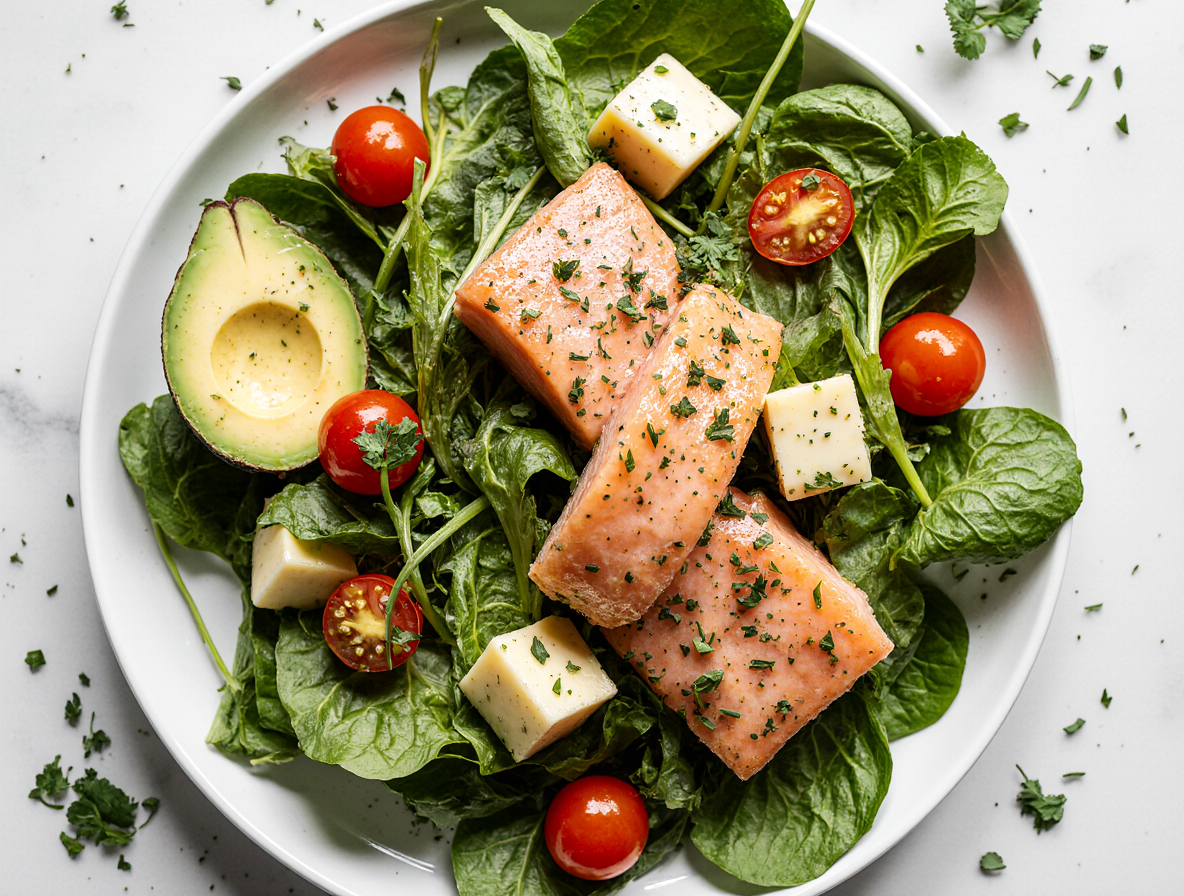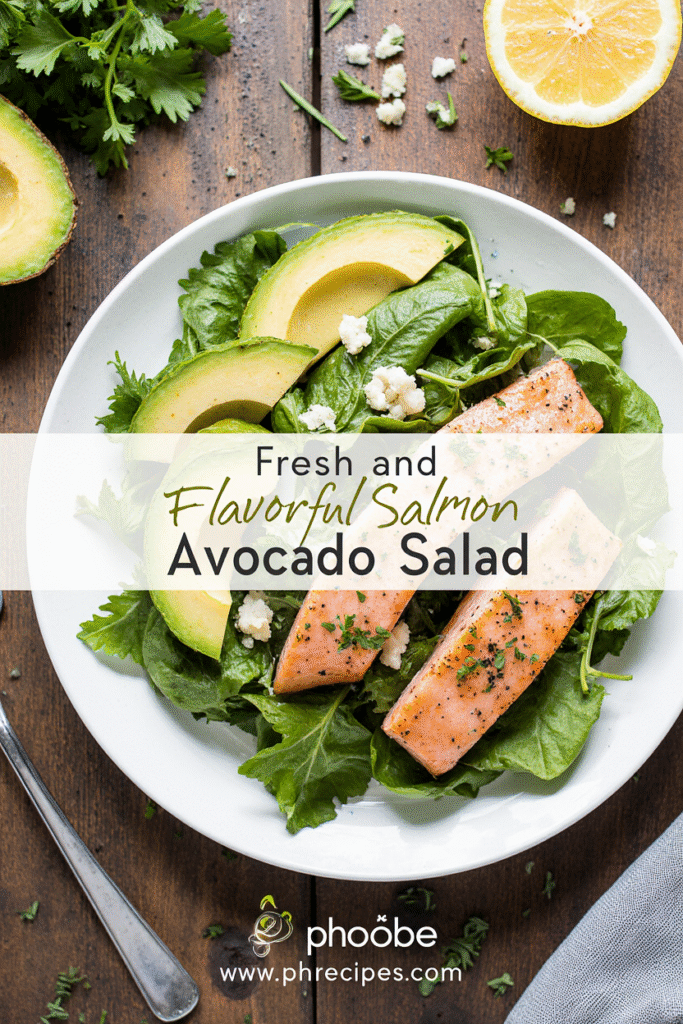The Secret to Making Restaurant-Quality Salmon Avocado Salad at Home
Salmon and avocado salad might be the perfect weeknight dinner you’ve been overlooking. I was actually shocked the first time I made this dish—did it really only take 10 minutes to prepare something this delicious? This nutritional powerhouse combines two incredible superfoods in one bowl, creating a meal that’s not only healthy but also restaurant-worthy.
Furthermore, this salmon avocado salad recipe is surprisingly versatile and simple. It comes together in under 20 minutes yet delivers impressive results that are both light and filling. Whether you’re cooking for yourself or entertaining guests, this salmon with avocado recipe strikes the perfect balance—taking less than 30 minutes start to finish while still being impressive enough for company. We love how the wild salmon provides a healthier fatty acid profile, while being incredibly high in omega-3 fatty acids. If you’ve been hesitant about cooking salmon at home like I once was, this foolproof approach will change your mind.
Choosing the Right Ingredients for a Salmon Avocado Salad
The perfect salmon avocado salad begins with thoughtful ingredient selection. When shopping for salmon, consider the choice between wild and farmed varieties. Wild Alaskan salmon stands out for its superior nutrient profile, offering a healthier fatty acid balance due to the fish’s natural diet. Farmed salmon typically contains more total fat—15 grams compared to 5 grams in wild salmon for the same serving size.
Surprisingly, “fresh” salmon at your grocery counter might not be what you think. Unless it was flown in overnight, that “fresh” salmon was likely previously frozen and thawed for display. For consistent quality, many chefs prefer flash-frozen salmon, which locks in freshness immediately after catching. When selecting frozen salmon, look for packages with airtight seals and minimal ice crystals.
For those concerned about contaminants, wild salmon generally contains lower levels than farmed varieties. However, removing the skin before cooking decreases exposure to potential pollutants regardless of which type you choose.
Several salmon varieties work excellently in this salad:
- Sockeye: Most common wild variety with rich flavor
- King (Chinook): Prized for buttery texture
- Coho: Milder taste, excellent for those new to salmon
Beyond salmon, select firm, ripe avocados that yield slightly to gentle pressure. For greens, romaine lettuce provides satisfying crunch, though baby spinach offers additional nutrients. Persian cucumbers deliver extra crispness without requiring peeling, whereas English cucumbers feature thin skin and smaller seeds—ideal for salads.
Cherry tomatoes halved or quartered add vibrant color and juicy sweetness. Red onion contributes a pleasant bite, though green onions offer a milder alternative. Consider feta cheese stored in brine rather than pre-crumbled varieties for superior moisture and texture.
Remember, high-quality ingredients make all the difference in a restaurant-worthy salmon avocado salad. Essentially, each component matters—from the salmon’s origin to the ripeness of your avocado—creating a harmonious balance of flavors and textures.
How to Cook Salmon Like a Pro
Cooking the perfect salmon for your salmon avocado salad requires precision and technique. Many home cooks struggle with salmon because they’re following outdated advice. In fact, the FDA recommends cooking salmon to 145°F, but this often results in dry, overcooked fish that nobody enjoys.
Instead, aim for an internal temperature of 130°F and then let it rest for 5 minutes. This approach ensures your salmon remains tender, moist, and flavorful – the foundation of an exceptional salmon avocado recipe.
The cooking method you choose significantly impacts the final texture of your salmon. Pan-searing creates a deliciously crispy skin that contrasts beautifully with the creamy avocado in your salad. For perfect pan-seared salmon, start with completely dry skin – pat it with paper towels or even leave it skin-side up in the fridge for an hour. Once in a hot pan with sufficient oil, press down on the filets for 10 seconds to ensure the skin makes full contact with the surface.
Alternatively, slow-roasting salmon at 275°F for about 20 minutes provides a gentle cooking method that’s nearly foolproof. This technique works wonderfully regardless of seasonings or whether the skin remains on, yielding consistently tender results.
Broiling offers speed – just 7 to 9 minutes under high heat – but requires vigilance as salmon can quickly overcook. Position your oven rack about 6 inches below the heating element for optimal results.
Regardless of method, remember these professional tips:
- Never wait until salmon is fully cooked before removing it from heat – it continues cooking from residual heat
- Watch for visual cues – when salmon flakes easily with a fork but remains slightly translucent in the center, it’s done
- The appearance of white albumin (protein) on the surface indicates you’re cooking at too high a temperature
Ultimately, learning to slightly undercook salmon then let it rest will revolutionize your salmon avocado salad recipe, giving you restaurant-quality results every time.
Assembling and Dressing Your Salad
Now comes my favorite part—bringing all those carefully selected ingredients together into a beautiful salmon avocado salad. Assembling this dish is more art than science, yet requires minimal effort for maximum visual appeal.
Begin by preparing a vibrant lemon vinaigrette to complement your salmon and avocado. In a small bowl, whisk together 1/4 cup olive oil, juice from two large lemons, 1 teaspoon Dijon mustard, 1 teaspoon honey, 1-2 minced garlic cloves, 1/2 teaspoon dried oregano, plus salt and pepper to taste. Whisk for about one minute until slightly thickened. This dressing can be made up to 4 days ahead and stored in a sealed container in the refrigerator.
For the assembly, start with a bed of greens (spinach, romaine, or a spring mix) divided evenly among your serving bowls or on a large platter. Next, arrange the salmon portions on top. Around the salmon, create colorful piles of your prepared ingredients—halved cherry tomatoes, diced cucumber, sliced red onion, and of course, perfectly ripe avocado cut into chunks or elegant slices.
Just before serving, drizzle the lemon vinaigrette over everything. For an extra touch of restaurant-quality presentation, consider fanning avocado slices decoratively or arranging ingredients in separate sections around the plate for a composed salad effect.
Should you need to prepare components ahead of time, store salmon, vegetables, and dressing separately in airtight containers. The dressing stays fresh for up to a week, while prepped vegetables (except avocado) can be prepared a day ahead. Always add avocado at the last minute to prevent browning, and toss everything together only when ready to serve.
Moreover, this versatile salmon avocado salad can transform into various meals—try it in lettuce wraps, stuffed in grain-free tortillas, or served over quinoa for a heartier option.
Conclusion
After trying this salmon avocado salad, you’ll wonder why you haven’t been making it all along. This dish truly stands at the intersection of convenience and culinary excellence. What makes it special? Certainly the combination of omega-rich salmon with creamy avocado creates a nutritional powerhouse that satisfies both health goals and taste buds.
The secret lies not just in combining these superfoods but also in the details—choosing wild salmon when possible for better nutrient profiles, cooking it to that perfect 130°F internal temperature rather than the often-recommended 145°F, and assembling your ingredients with an eye for both flavor balance and visual appeal.
My experience has shown that even kitchen novices can achieve restaurant-worthy results with this recipe. Additionally, the versatility of this dish means you can adapt it based on seasonal ingredients or what’s already in your refrigerator.
Though it might seem simple, this salmon avocado salad teaches valuable cooking principles that transfer to many other dishes. The techniques for perfectly cooked salmon, the balance of textures from crisp vegetables to tender fish, and the bright acidity of a homemade vinaigrette all represent fundamental culinary skills worth mastering.
Next time you’re tempted to order takeout, remember this salmon avocado salad instead. Quick enough for busy weeknights yet impressive enough for weekend guests, it delivers professional results without professional effort. Give it a try—your taste buds and your wallet will thank you.
FAQs
Q1. How can I achieve restaurant-quality salmon at home? To get restaurant-quality salmon, cook it in a hot, non-stick skillet over medium-high heat. Sear the salmon skin-side down for about 4 minutes until crisp, then flip and cook for another 4-5 minutes. Aim for an internal temperature of 130°F and let it rest for 5 minutes before serving.
Q2. What’s the best way to assemble a salmon avocado salad? Start with a bed of greens, then add cooked salmon portions. Arrange halved cherry tomatoes, diced cucumber, sliced red onion, and chunked avocado around the salmon. Drizzle with a homemade lemon vinaigrette just before serving for the best flavor and presentation.
Q3. How can I enhance the flavor of my salmon? To make salmon taste restaurant-quality, season it well and consider using fresh herbs like dill. Ensure you remove any pin bones and scales. A spice rub can add extra flavor, and pairing it with a complementary sauce or salsa, like avocado, can elevate the dish.
Q4. Are salmon and avocado a good combination? Yes, salmon and avocado pair excellently together. The rich, creamy texture of avocado complements the flaky, omega-rich salmon perfectly. This combination offers a balance of healthy fats and creates a delicious, nutritious meal.
Q5. What’s the ideal cooking temperature for salmon? For the best results, cook salmon to an internal temperature of 130°F, then let it rest for 5 minutes. This approach ensures your salmon remains tender, moist, and flavorful, avoiding the dryness that can occur when cooked to higher temperatures


